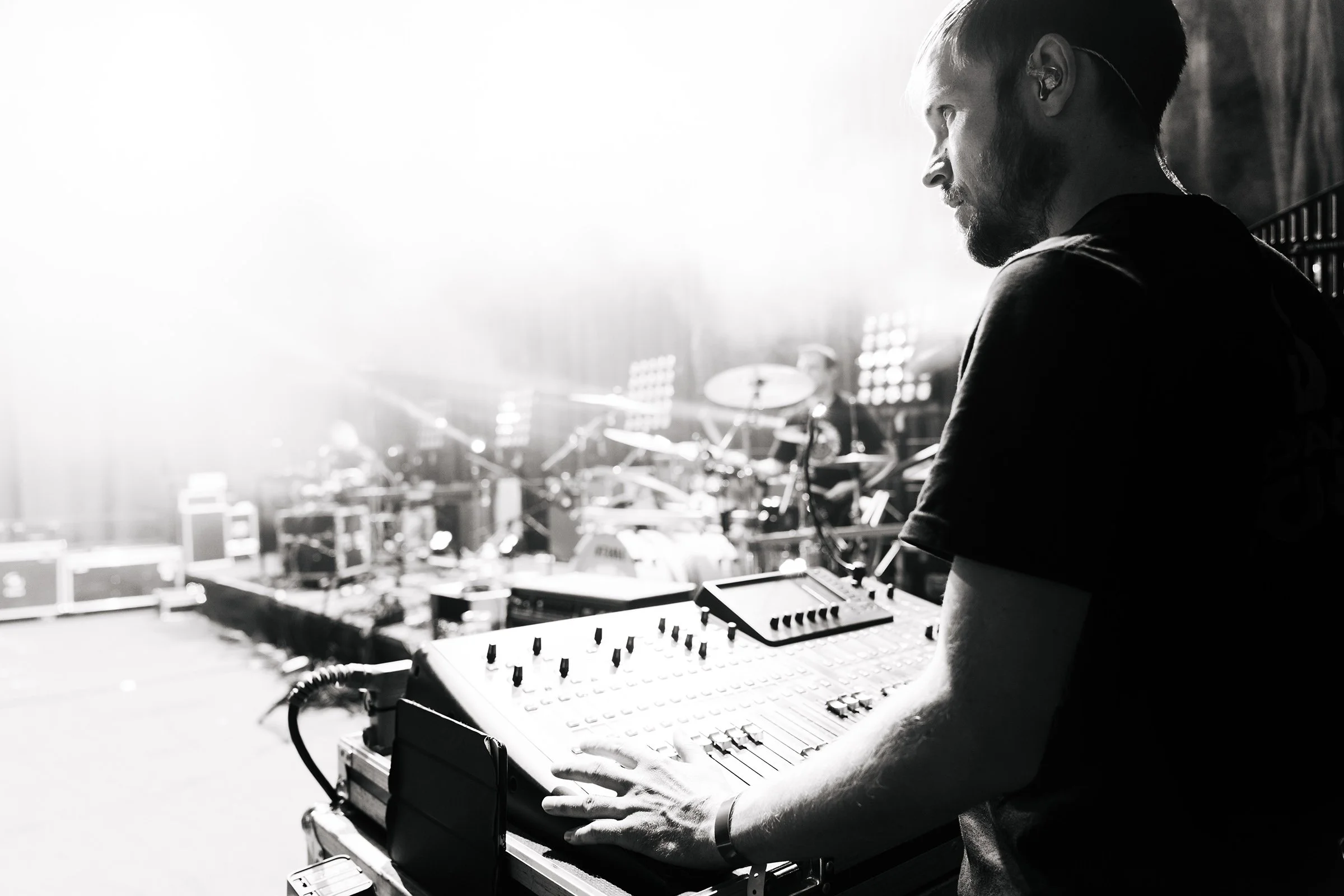In March 2023, Sennheiser released the news about their upcoming vision for the future of wireless audio. One of the leading players in the RF world presented their concept of the Wireless Multichannel Audio System or WMAS. It is primarily aimed at applications that require a lot of channels in the air, such as theatre productions, large sporting events, major tours and broadcast. Let’s see what the future has in store.
Read MoreI have been programming the Behringer Wing console as my monitoring mixer and had to come up with a way to heat talkback communication channels from stage techs and FOH engineer through my earphones. In this video I explain how I routed those channels to the solo bus and talk about an additional Cue/Tech mix that the crew and me listen to during the shows.
Read MoreOne of the most important qualities of a great sound engineer is not only trying to prevent the issues from happening, but also how quickly and efficiently they can resolve problems. Although most of them usually have a simple solution, the main factor of success is how quickly one can pinpoint the exact piece of gear or the exact situation that is causing the headache. Learning to be a troubleshooting ninja takes time and experience, but can also be acquired more swiftly when keeping in mind some of the following points.
Read MoreThe only live mixing events I have been allowed to do in the past 6 months have been mixing school performances at the Music and Ballet Conservatory in Ljubljana, working with the students and teachers from their jazz department. It gave me an insight into how a person that does not have a lot of stage experience can be overwhelmed with the stress of being on stage and how we as sound engineers can help them.
Read MoreThis summer I was commissioned to mix monitors at the Festival Melodije morja in sonca (MMS) in Portorož, Slovenija. It is a live music event that is being directly broadcasted by the national TV and radio stations where performers present new music and compete for the prizes. I was there as a part of the PA rental company team that provided sound reinforcement at the venue and IEM monitoring for the performers. This is the day-by-day replay of the show from my point of view.
Read MoreOver the past year or so I had received quite a few requests for private training sessions. It was either from people who attended my online courses or saw my lectures and wanted to expand on our 30-minute private training session to dig deeper into their own workflow or from people who did not really want to go through the entire course, but just wanted an opportunity to have a specific issue discussed.
Read MoreIn Slovenia, where I live, we had a brief moment of resuming work after almost six months back in September and I was able to get a few shows in before new restrictions were enforced. Those first shows were very revealing in terms of what seems to be working when getting behind the console after a long time - at least for me - and I thought I would share them with you.
Read MoreSession templates are a great tool for a modern sound engineer. They allow you to be efficient and fast, while on the other hand the process of their creation also provides an always needed opportunity to reflect on your own workflow and come up with ways of making it even better.
Read MoreIn the Sound Advice video series I try to bridge the gap between act members and sound engineers. In this article we talk about all the things guitar players should know about live sound. Let's work together to bring the best possible version of your rig's ultimate sound you are working so hard on to the audience. You can be a Fender or a Gibson fan, a Marshall or a Vox user, or fall into every little niche on the spectrum of how much effort you put into your guitar sound, the information in this video is universal to all electric guitar players. Here is what I talk about:
1. Matching Your Preset Levels
2. Considering the Entire Sound Path
3. Managing Your Stage Volume
4. Solving Monitoring Issues
5. The Use of Reverb and Delay
We talk a lot about gear in our line of work - mixing consoles, speaker boxes, microphones. But personally I get weirdly excited about the little things, the gadgets that make my life and work easier. So I want to tell you about Sound Bullet. This is a rechargeable multifunctional input output audio testing device made by a company called Sonnect and I have been using it on almost every gig for a year now and I love it.
Read MoreWhen packing your bag to go to a live sound gig, the first item should always be good headphones that allow you to check for audio signals, provide a reference sound to which you can calibrate your PA system and to potentially mix a show on them as well. A hundred different engineers will choose a hundred different brands or models that they prefer, however, all good live sound headphones meet the same demands and tick the same boxes. If you are on the market for a brand new set or just rethinking your current choice, here are some of the things you should keep in mind.
Read MoreWhen I was preparing for my Live Sound Summit 2020 lecture on in-ear monitor (or IEM) mixing, I was trying to come up with a better understanding of key concepts that seem to be underlying every interview or article I came across with monitor engineers that mainly work with IEM users. A soundbite that I could present to anyone who came up to me, asking “how can I become a better monitoring engineer for IEM users?” To my surprise, it has a lot to do with… cats.
Read MoreAre you still using graphic EQs for shaping your audio? Check out my latest video on how the GEQ actually affects your signal - you might change your mind.
Read More
















